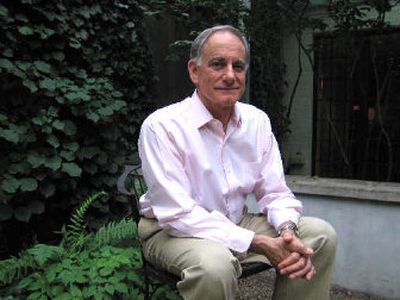Compelling storyteller

Talk about a tough act to follow.
John Berendt’s first book, “Midnight in the Garden of Good and Evil,” racked up rave reviews, broke records by spending more than four years on the hardcover best-seller list and spawned a Hollywood movie directed by Clint Eastwood.
The prospect of writing a second book might have paralyzed some authors. Not Berendt.
“I didn’t have writer’s block,” he says. “I simply had the challenge of finding a story.”
And not just any story, but one that was at least as compelling as the true 1981 murder at the heart of “Midnight.”
Berendt, 65, managed to discover a story of intrigue set in a city as captivating as Savannah, populated by personalities just as idiosyncratic and mesmerizing: Venice.
And now, 11 years after the stroke of “Midnight,” he’s sharing it with the rest of us in “The City of Falling Angels” (Penguin Press, 432 pages, $25.95).
Berendt, who lives in New York, had been to the Italian city many times, but always in tourist season. So he decided to go in winter, to discover the Venice only Venetians know.
Then, three days before he arrived in January 1996, the city’s famed Fenice Opera House burned to the ground.
“I was horrified,” says Berendt, who had been inside the 1792 landmark on earlier visits. “And I was heartbroken.”
The Fenice (pronounced feh-NEE-chay) had been the last opera house in Venice, one of the birthplaces of opera. Without it, the city had no remaining stage for the performing arts. The theater had to be rebuilt.
“After a few weeks, I realized it would be a perfect framework for a book, because it was so central to what Venice is now all about,” Berendt says.
“And the question that’s facing Venice today is, is it a living city, or dead city, or is it dying? Because after Napoleon defeated it, and robbed it of all its wealth, it didn’t do anything. It just decayed. It just got poorer and poorer, and something like 40 percent of the people were beggars by the end of the 19th century.
“Things got a lot better. However, the question is, had it become a museum city? There was fantastic art and architecture, but all of that had been done hundreds of years before. What had been done lately?”
Much hinged on the fate of the Fenice.
“They had to do something to make the city vibrant and alive again,” Berendt says. “That’s why it’s so crucial. And I said, ‘OK, that’s a framework. I’ll start with the fire and end with the reopening, if it’s ever rebuilt.’ “
Over the course of eight years, Berendt spent weeks and months at a time in Venice, in rented apartments and, for six weeks, in the gondolier’s cottage once occupied by writer Ezra Pound. He followed the long, drawn-out investigation into the fire’s cause (arson? negligence? mafia?) and eased into the rhythms of Venetian life, keeping his eyes peeled for characters.
They include the Rat Man of Treviso, whose secret rat poison recipe wins him customers around the world; a lonely poet whose unexpected suicide prompts friends to suspect murder; a plant salesman who wears his wares and resembles a traveling shrub; a family of American expatriates who must give up the palazzo that was in their family for generations; a family of feuding glassblowers; the illegitimate daughter of Pound, who may or may not have been swindled out of her father’s literary legacy; and many more.
Berendt turned in his final draft to his publisher last May, about six months after the opera house reopened.
The reviews so far have been mostly glowing. A Boston Globe reviewer wrote: “It takes an inordinate amount of willpower to read Berendt’s funny, insightful, illuminating travelogue and not want to board the next flight to the mysterious, magical city of canals.”
Berendt remains tight-lipped on where his next project might take him, although he says he wishes to remain an outsider looking in.
“New York is so full of pockets of enclaves of people who know each other,” he says. “I could easily find myself doing a story about people who I didn’t know anything about. People who didn’t know anyone I knew. And live lives totally different from mine.
“That’s still possible in a city this big. But I haven’t found anything yet.”